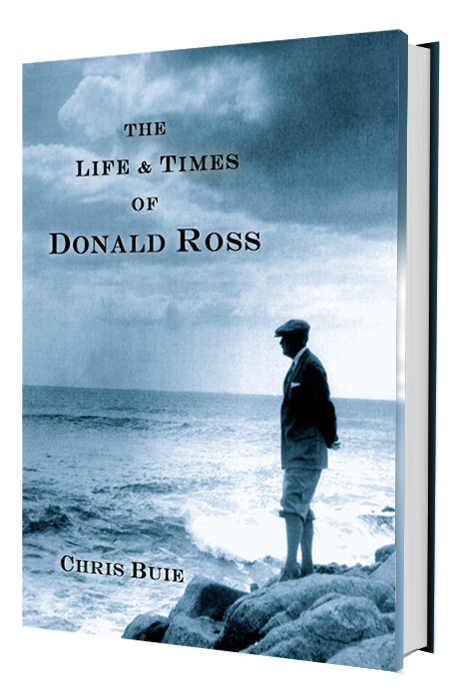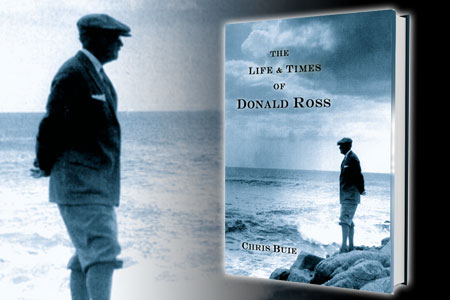The previous book, The Early Days of Pinehurst, was finished just before the back-to-back 2014 U.S. Opens in Pinehurst. There were no plans to write another book. I thought I might write the occasional article for Golf Club Atlas. But beyond that there were no writing ambitions. However…
I went to the tournament on Saturday and walked up on the hill behind the 12th tee of No. 2 Course where you can see from the clubhouse to the highway on No. 1 Course. That’s almost half of a mile. It was completely packed! I’ve been going to tournaments there since the 70’s. But other than the last few holes of previous U.S. Opens, I’d never seen crowds like that. It was stunning. So that’s where the epiphany was and this was the unusually clear and resonant thought:
“Not one of these people would be here if it was not for this Ross guy.”
We’re talking about a guy who showed up on the American shore over a century ago with practically no money and no friends. Yet, somehow he was able to have a profound effect – an effect that still has incredible vitality long past his time. Millions continue to be revitalized by his work to this day and this will continue far into the future.
So, I just had to know the story of this guy.
I didn’t think much new material would arise. A nice portrait of a remarkable person was the original concept. But…it turned out very differently than anticipated. There was a lot of new material. And, in the course of looking through mounds of information, new themes emerged. These themes were large and gave a considerably different shape to the man and his story. It was very surprising and far more impressive than anticipated. A side benefit is that this heightened the intrigue of the writing process.
Here’s an example of the eye opening material: Ross did a lot more naturalistic shaping than is commonly believed. It took a while for that picture to emerge and this was very different from my general preconceptions. After clarity was brought to that point, I thought: “well, I guess he really did break from the traditional Scottish ways.”
Wrong.
 The epicenter of the golfing world is, of course, St. Andrews. For centuries people have waxed on about the lovely native contours and whatnot.
The epicenter of the golfing world is, of course, St. Andrews. For centuries people have waxed on about the lovely native contours and whatnot.
But did you know the first and eighteenth fairways were manufactured?
Here’s a question for you: what was the area of the eighteenth St. Andrews green before it was a green?
It was a burial ground.
When they were building the green they were pulling out skulls and bones – which they stacked up next to Forgan’s golf shop.
Well, that’s just a fragment of the things I found surprising.
Even if you were familiar with that particular story, believe me, the book is filled with things you did not know. I can say that because the people who vetted the book are all ultra knowledgeable and even those brainiacs came away with new views of the enigmatic Scotsman.
On the occasions when you encounter a particularly good book you’re keen to know how the story unfolds. My experience has been that writing is very much like that, as well. The materials that were
turning up were taking the story in such unexpected directions that I didn’t know where it was going to end up. Now that there’s been time to digest the full picture, I can tell you that going through the long
process was enormously satisfying.
Chris Buie is the author of The Life and Times of Donald Ross. He invites you to read this Classics of Golf blog series to gain further insight into the golf legend. He also would like to emphasize the blog is stylistically different than the linear narrative of the book. To see the difference, order your copy of The Life and Times of Donald Ross and enjoy the history behind this iconic golf course architect.

